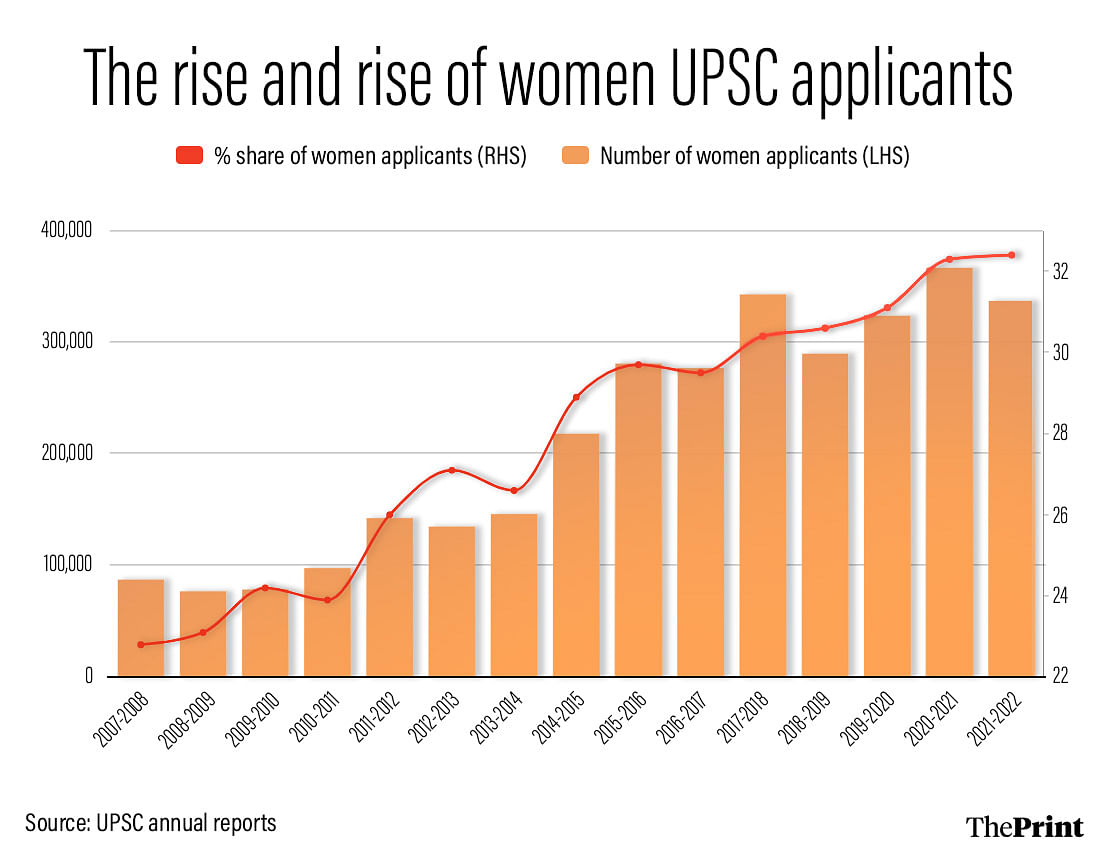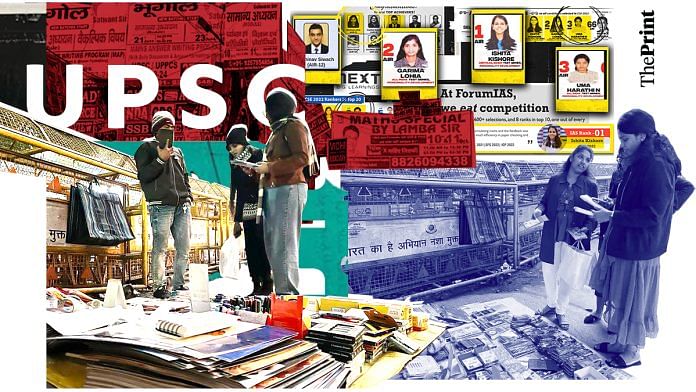New Delhi: Mamta Singh, 20, waits for a metro at Delhi’s Mandi House station, on her way home after taking an exam. A B.A. programme student in her final year at Delhi University’s Lady Irwin College, she had just about started to wonder about career goals when family members insisted that she appear for the Union Public Service Commission (UPSC) exams.
Their advice, and some posts on social media convinced her to give the civil services a shot.
“I have seen women IAS and IPS officers on social media and in the newspapers,” says Mamta. “It seems very attractive, and you can really do something for your country and society. I know it will require a lot of study and effort, but one can dream.”
After filling out her UPSC application form, Mamta will begin her search for a coaching centre. She plans to take the exam next year.
As she boards the metro, she beams with pride and says, “I am the first woman in my family to even think of becoming an officer. Earlier, girls in my family were not even allowed to study after the 12th standard.”
Like Mamta, there are lakhs of women in India who are dreaming about becoming civil servants, and this number has grown sharply over the last 15 years. While civil services are a goal many Indian parents set for their children, inspiring stories of aspirants cracking the UPSC exam in newspapers, social media and TV channels serve as the additional fillip.

Over the last 15 years, the number of women applying for UPSC exams has increased nearly four-fold, outpacing the growth of total applicants.
In 2007-08, 3.83 lakh people applied for the exam, of which 87,624 were women, according to the UPSC’s annual report. This worked out to around 23 percent of the total applicants. By 2021-22, the latest year for which data is available, the total number of applicants for the exam rose to 10.4 lakh — a little less than a tripling — while the number of women applicants jumped to 3.37 lakh, nearly four times the number in 2007-08. In simpler terms, almost a third of the total number of UPSC applicants are women.
Women made up nearly 30 percent of the candidates who were recommended for a UPSC post in 2021-22, up from around 21 percent in 2007-08, showed an analysis of UPSC annual reports.
So what’s encouraging more women to opt for the civil services now?
“The main reason is awareness and generational change. Now, women are more career-oriented and ambitious, they get support from their families, society and from the government too,” says 2011 batch IAS officer Hephsiba R Korlapati.
She added that women now have more educational opportunities and though one needs to be a graduate to appear for the UPSC exam, the degree can be in any discipline and from any university. “One can complete a graduation degree in a distance mode and persevere to crack the exam. Goal-setting, determination, focus and preparation matter.”
ThePrint reached UPSC Chairman Manoj Soni for comment via phone and email. This report will be updated if and when a response is received.
Also Read: Haryana civil service shocker: 90k applicants for 100 vacancies, but just 61 reach interview stage
Improved perception of safety
Safety used to be a major factor keeping women from leaving their houses to go out and study. Parents didn’t feel comfortable sending daughters to different states, or even to different districts. But now, more and more women are going out to study.
“I remember when I was in school, and my aunt wanted to prepare for a government job, my grandfather refused because of safety issues,” says 26-year-old Seema Kumari, an UPSC aspirant from Gopalganj, Bihar. “It was a big thing for our family to send a daughter to another city, but when I grew up and expressed my wish to prepare for the UPSC exams, my father sent me to a coaching centre in Patna.”
In Seema’s family, girls weren’t allowed to “even dream of getting a government job”. A lot of factors were responsible for that, including safety, money, and the perception of distance.
Now, with attitudes changing and the ubiquity of digital communication, parents are more at ease sending daughters far from home in the pursuit of an education or a career. That along with the security and financial independence that come with a government job.
“My father is a government servant himself, he knows the value of a government job. He wants me to have a secure job and be financially independent so that after my marriage, I won’t be dependent on my in-laws,” says Kumari.
“This (civil services) is the best government job in India. You can bring about real change in society and in the country, and we need women representation on every front,” she adds.
Family support a major factor
Lakshmi Gulia, 24, got married a year ago. Before the wedding, she made it clear to her in-laws that she wants to be an IAS officer.
Juggling this dream with daily life hasn’t been easy, but that didn’t slow her down a bit. “I wake up at 5 am and go for coaching to Karol Bagh,” she tells ThePrint. “I study eight hours a day. I also look after household chores, but my family is very supportive and they encourage me with my studies.”
For a 25-year-old aspirant who didn’t want to be named, it has been four years of arduous preparation. She will be giving her first UPSC interview this year.
“For me personally, it has been my family’s support and motivation to have a better education and to be independent. In general, I think there has been progress in society’s attitude, enabling equal opportunities for women,” she says.
These factors may have also been the reason why the percentage of female students’ enrolment in higher education institutions in India has, over a span of 10 years, increased to 49 percent in 2020-21 (the latest data available) from 45 percent in 2010-2011, according to the All India Survey on Higher Education (AISHE).
‘Government actively encouraging women applicants’
Another factor that seems to be pushing more women to take the UPSC exams is the government’s approach to encouraging them.
Every single page of the UPSC exam notification carries a line at the bottom saying: “The government strives to have a workforce which reflects gender balance and women candidates are encouraged to apply.” Women also have to pay no fees to fill the form.
“Although the fee for the general category is nominal, this is a visible and bold initiative by the government to encourage women to apply for the exam,” says IAS officer Korlapati, quoted earlier.
The digital advantage
Cracking the UPSC exam, it is well known, requires the applicant to be knowledgeable in a wide range of topics. Earlier, this meant aspirants would scour newspapers and general knowledge textbooks, spending hours in libraries.
This too proved to be an impediment for women applicants as families were unwilling to let them leave the house for hours at a stretch. With the internet, especially video portals like YouTube, study material has become easily accessible, which helps a lot of aspirants prepare from their homes.
“Online information and material helps a lot in the preparation. You don’t have to go out to buy more material, you can find it online. Women are getting support from their families, they are coming into the service after marriage, after divorce too,” says Ira Singhal, a 2015 batch IAS officer.
“Society has changed with time and now families are very keen on daughters having a career. Now awareness has increased and the media played an important role in this. They brought inspiring stories to the mainstream. Now women have role models,” she adds.
(This is an updated version of the report.)
(Edited by Gitanjali Das)
Also Read: Selling land, borrowing money, eating less: What UPSC coaching does to poor families




Sir hame bhi upsc ki taiyari karani h